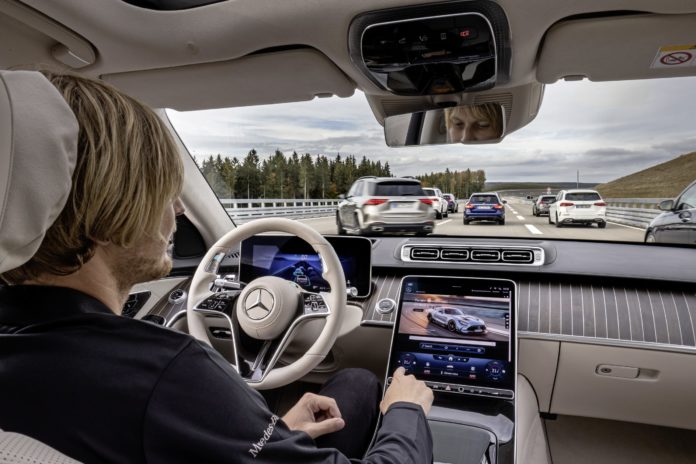Mercedes-Benz has just become the first carmaker to get approval for Level 3 autonomous driving in the United States. The system will only be in use in Nevada, but the carmaker is planning to extend it to other states.
The first cars to get the function will be the Mercedes-Benz S-Class and the EQS electric sedan. According to the Society of Automotive Engineers (SAE), Level 3 autonomous driving refers to a vehicle capable of driving without human intervention under limited conditions. It will not operate unless all required conditions are met. “You are not driving when these automated driving features are engaged – even if you are seated in the driver’s seat,” SAE explains.
Drive Pilot uses a plethora of cameras, LiDAR sensors, and GPS tracking. It also monitors the driver’s attention and makes sure they will not fall asleep while the car is in motion.
The system that Mercedes developed, Drive Pilot, can only operate at speeds of up to 37 mph (60 km/h). In late June, in Europe, a new regulation (UN Regulation No. 157) greenlighted the system for speeds up to 130 km/h (81 mph).
But not in the U.S. yet, where the system will mostly be useful in traffic jams, with the driver performing other tasks. But they need to stay alert, as – according to SAE – “When the feature requests, you must drive.”
If the driver fails to take control when the system asks them to, the car will safely come to a stop within ten seconds.
Mercedes-Benz also applied for Level 3 autonomous driving certification in California
Mercedes-Benz is also targeting the achievement of a similar certification in California for its Level 3 autonomous driving. The Drive Pilot feature is already available in Europe for the EQS and the S-Class. Future owners of the S-Class and EQS can tick the box for the Automatic Lane Change Assist as well. The feature allows cars to change lanes performing all the accompanying tasks: activating the turn indicator, making sure the lane is free, and moving to the desired lane.
Mercedes will take full responsibility in case of accidents while the system is engaged.

